|
|
Snark
|
Name:
|
Snark |
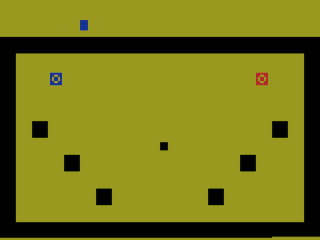 |
| Company: | Atari | |
|
Model #:
|
N/A | |
|
Programmer:
|
John Dunn |
|
| Year: | 1978 |
|
|
Released?
|
No
|
|
|
Notes:
|
Found in 2022 |
When programmer John Dunn (of Superman fame) gave an
interview back in 2000 he mentioned working on another game at
Atari that never got released called Snark. John described
Snark as "A combination maze solver and shooter".
Unfortunately John didn't have a copy of it anymore and the game
was believed to be lost. Fast forward to 2022 when a
previously unknown prototype labeled Snark was found in the
collection of Jim Snyder (who worked in research and development
at Atari in the early 80's) by Alvaro Arroyo.
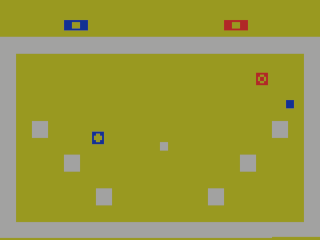
Snark can best be described as... well it really can't be described in terms of another game. Snark it truly a unique idea, at least for the time. Each player controls a tank which must shoot a block called the Snark for points. Each successful hit on the Snark is worth 3 points and scoring more than 21 points will win the game. Sounds easy right? Not at all! At the start of the game the Snark will simply sit there waiting to be hit, but the second one player shoots it the Snark will begin to move randomly around the screen. Once the Snark starts to move each player must make sure not to come into contact with it or they will lose 5 points. Since the Snark is pretty fast, the best strategy is to hide behind some of the blocks and take pot shots at it lest you find your score dropping to zero points rapidly from all the unintentional collisions. Shooting your opponent will take a point away from them, but if they don't have any score yet it will actually give them a point! It's unknown if this is a bug or an intended feature.
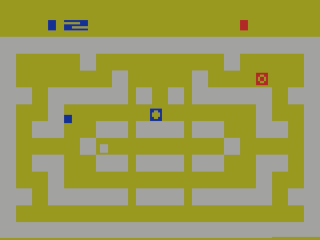
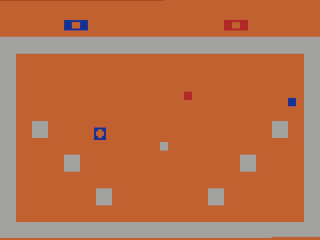
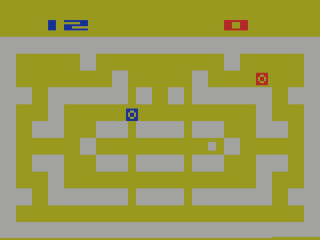

Variations 5-8 have what John called the 'Video Spin Mode'. Video Spin Mode is just a fancy way of saying a flashing background. In these variations the background will quickly cycle through colors making it flash constantly. While flashing backgrounds were nothing new in 2600 games, the flashing usually only lasted a second or two. In Snark the flashing is continuous, even in B&W mode. Not only does this give the player a headache after a short time, it has the real possibility of inducing seizures in sensitive people. It's unknown what the point of this mode was as it doesn't seem to have any effect on the gameplay. Perhaps John was looking for a way to make the game a little more difficult (it's does indeed make the screen hard to look at) or maybe he thought it just looked cool?
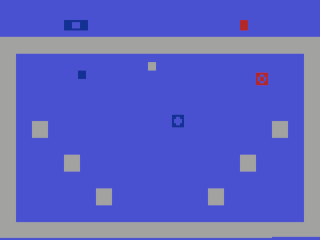
So why was Snark never released? According to John Dunn:
While many people may think the risk of video games causing seizures is overblown, the concern in this case is quite warranted. The 'Video Spin Mode' variations flash colors so fast that the possibility of seizures is very real (it's not particularly fun for non-seizure sufferers to look at either). Why John didn't just remove the Video Spin Mode is unknown. The game seems complete and there doesn't seem to be any space left for more features (there are zero bytes free!). However there are a few unused features in the code that hint at possible ideas that John had been playing with such as different sized bullets. The game also has some oddities which may be bugs such as shooting a player with zero points will add one point to your score and the game will always take the player to the second maze if they are still on the first maze and about to win the game (the winning shot simply won't be counted and the second maze appears).
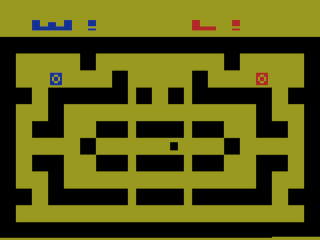
Special thanks to Alvaro Arroyo for finding, dumping, and sharing this prototype and to Thomas Jentzsch for helping figure out how to play the game!
| Version | Cart Text | Description |
| 4-30-78 | Snark 430 |
Complete? |
